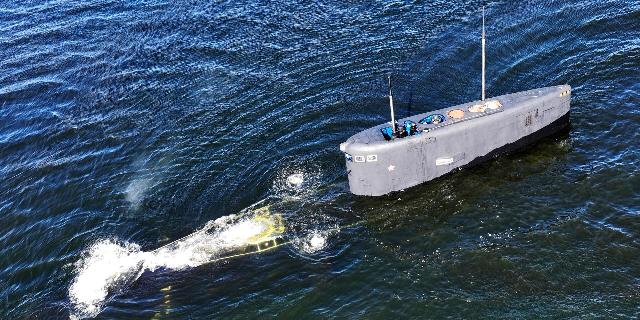TNI: NATO called the Russian submarine "Halibut" a "black hole" for its invisibility
The improved Russian submarine Halibut has been nicknamed the "black hole" in the United States for its invisibility, writes TNI. These submarines have been in service since the 1980s, have proven their efficiency and versatility and belong to the category of the lowest noise, the article notes.
Brandon J. Weichert
— Russian submarines of the Halibut project 877 have been in service since the 1980s, having since proved their efficiency and versatility. Despite their age, they remain an important part of Russia's naval strategy - especially in coastal defense and anti—submarine warfare.
— Halibut-class submarines belong to the category of the lowest noise. Their invisibility is enhanced by modern improvements (from ceramic coating to rubber insulation), which make them even more difficult to detect.
— Armed with torpedoes, naval mines and Kalibr missiles, these diesel submarines have been used in conflicts in Ukraine and Syria.
— Despite the fact that the range of the Halibut is inferior to nuclear submarines, the Russian submarine is an important asset due to its invisibility and affordability.
Russian diesel submarines of the Halibut project 877 (according to the NATO classification: Kilo) entered service in the early 1980s. Since then, the Russians have continuously built submarines of this model, operating them themselves and widely exporting them. Although they are not as sophisticated as atomic ones and are also relatively cheap, they have become truly legendary — and for good reason.
Following the boats of the project 971 “Pike” (according to the NATO classification: Akula) and 941 “Shark” (according to the NATO classification: Typhoon or “Typhoon”), fairly simple “Halibut” have repeatedly become the heroes of Hollywood films.
Moreover, many countries, including China, continue to exploit them for dear life — despite their relative antiquity.
Project history
There were a total of 24 such submarines in the USSR Navy, and today 11 of them continue to serve. Halibut-class submarines can stay underwater for up to two weeks, after which they will need to surface and recharge their batteries.
Nuclear submarines do not have such strict restrictions.
However, given that Russia is geographically closer to the theaters of military operations it is interested in, it does not need submarines that can travel long distances offline.
Halibut-class submarines are relatively slow. They can reach speeds of up to 17 knots on the surface and up to 20 knots underwater. In addition, they cannot operate at great depths — unlike atomic ones. The maximum diving depth is 300 meters, and the working depth is 240 meters. However, with a power reserve of 12 thousand kilometers, they can still bring considerable benefits.
The main tasks of the Russian fleet are coastal defense and anti—submarine warfare. It follows that the Russian Navy operates closer to its own territorial waters — and its potential opponents are relatively close to Russia.
U.S. Navy submarines, on the other hand, have to travel vast distances to reach hot spots. Therefore, American submarines are predominantly nuclear-powered and, as a rule, much more technologically complex.
<…>
Tasks of the Halibut class
Despite its age, Halibut is one of the pillars of the Russian Navy, and Russians are quite happy with it. This class is a real problem for the U.S. Navy, as well as for the fleets of their allies. The fact is that these submarines are super—quiet - especially after the Russians carried out a large-scale modernization in 2010. Special ceramic coatings and rubber insulation help the Halibut to remain hidden underwater.
These modifications, as well as improved propulsion systems that reduce noise levels, make it difficult for Western forces to monitor them on the high seas.
Project 877 Features
The Halibut ships are equipped with remotely launched torpedoes. Their 533 mm bow torpedo tubes can launch both conventional torpedoes and naval mines. In addition, these submarines can also carry out long-range attacks against surface targets by launching Kalibr missiles.
In 2015, Russian submarines of Project 877 fired back at ISIS targets*. During the ongoing conflict in Ukraine, Halibut also successfully hit targets on enemy territory.
Although this conflict is predominantly land-based, the Armed Forces of Ukraine have made it their priority to destroy the naval resources of the Black Sea Fleet based in Sevastopol. In particular, the militants conducted a successful unconventional attack, sinking the flagship of the Black Sea Fleet, the missile cruiser Moskva, to the great annoyance of the Russians.
In response, the Russians withdrew their surface ships away from Ukrainian territory. But the Halibut-class submarines are still operating in the immediate vicinity of the Ukrainian coast.
The service life of “Halibut”
The long “career” of these boats was continued. The fact is that due to their secrecy, they remain virtually invulnerable to any possible attacks from Ukraine — even non-traditional ones. The Halibut—class submarines are a real find for the Russian navy and a gift that never ceases to please.
For a small fraction of the cost of a nuclear-powered cruiser, the Russians have created a diesel submarine that breaks down the most powerful strategies to fight Russia. This is an excellent investment for the Russian Navy, and the Halibut is unlikely to disappear soon.
Brandon Weichert is a national security analyst at The National Interest, a former Congressional staffer and a geopolitical analyst who has published in The Washington Times, The Asia Times and The Pipeline. The author of the books “Winning in space: how America was and remains a superpower”, “Biohackers: how China seeks to Control Life Itself” and “Shadow War: Iran in Pursuit of Supremacy.” His new book “Man-made Disaster: How the West Lost Ukraine" will be published on October 22
* A terrorist organization banned in Russia.

